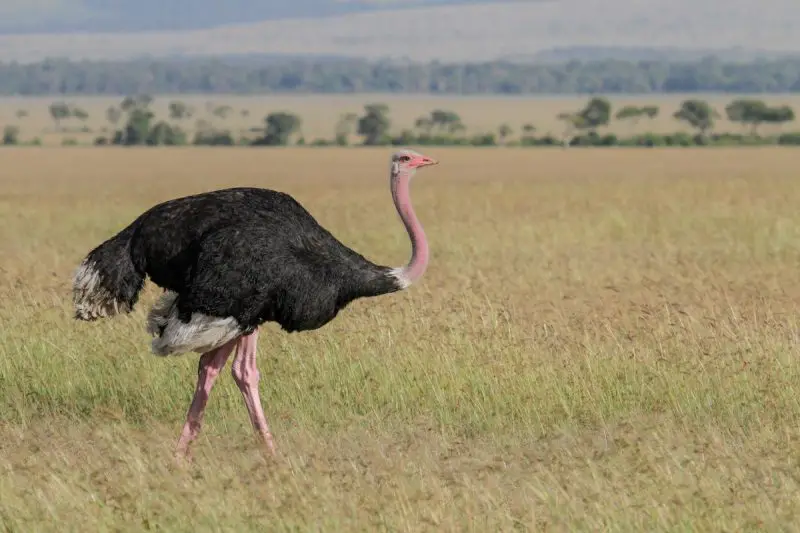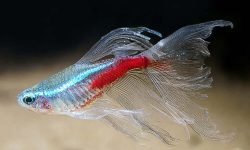The bird kingdom is filled with extraordinary species — tiny hummingbirds, colorful parrots, and majestic eagles. Yet among them, one stands above the rest — quite literally. The biggest bird in the world is a fascinating creature that has captured human curiosity for centuries. Towering in size, swift on land, and surprisingly intelligent, this bird is not just a giant but also a biological marvel.
In this detailed guide, we’ll uncover 10 amazing facts about the biggest bird in the world — the ostrich — exploring its anatomy, behavior, habitat, and unique survival strategies.
What Is the Biggest Bird in the World?

The title of the biggest bird in the world goes to the ostrich (Struthio camelus), native to the dry savannas and semi-arid plains of Africa. These flightless giants stand as tall as 9 feet (2.7 meters) and can weigh up to 340 pounds (155 kilograms).
Unlike most birds, ostriches have evolved to thrive without flight. Instead, they rely on remarkable leg strength and speed, making them one of the fastest runners in the animal kingdom. With their large eyes, long eyelashes, and distinctive plumage, ostriches are instantly recognizable symbols of the African wilderness.
Fact 1: The Ostrich Is the Tallest and Heaviest Bird on Earth
The first and most obvious fact about the ostrich is its sheer size. Adult males can reach 9 feet in height and weigh between 220 to 340 pounds, while females are slightly smaller, averaging around 6.5 to 7 feet tall.
This impressive stature allows the ostrich to have an exceptional field of vision — it can spot predators from miles away. The long neck helps it stay alert while grazing on grass and seeds, ensuring early detection of danger in open habitats.
Their size also means they have strong bones and powerful muscles, especially in the legs. Each leg can deliver a kick strong enough to injure or even kill a predator like a lion.
Fact 2: Ostriches Can’t Fly, but They Run Faster Than Horses
Though they’re flightless, ostriches are exceptional runners. Their long, muscular legs and lightweight bodies allow them to sprint at speeds up to 43 miles per hour (70 km/h).
This makes them not only the largest bird but also the fastest running bird in the world. They use their wings as stabilizers when sprinting, helping them balance and change direction with precision.
This adaptation evolved as a survival mechanism in the open African savanna, where outrunning predators like lions or cheetahs is more practical than flying. Their endurance also allows them to maintain a steady pace of 30 mph (48 km/h) over long distances — something few animals can achieve.
Fact 3: They Have the Largest Eyes of Any Land Animal
One of the most astonishing physical traits of the ostrich is its eyes. Each eye measures about 2 inches (5 centimeters) in diameter, making it the largest eye of any land animal — even bigger than an elephant’s eye.
These large eyes provide incredible vision, crucial for detecting movement across vast landscapes. Their acute eyesight helps them see predators like hyenas or cheetahs from far away, giving them time to react and escape.
Additionally, their long eyelashes protect the eyes from sand and dust in windy desert environments, acting like natural goggles.
Fact 4: Ostriches Lay the Largest Eggs in the World
When it comes to reproduction, ostriches break another record — their eggs are the largest of any living bird species. Each egg weighs around 3 pounds (1.4 kilograms) and is roughly 6 inches long.
A single ostrich egg is equivalent to about two dozen chicken eggs. Despite its size, the shell is surprisingly thin relative to the bird’s body mass, which allows chicks to hatch with less struggle.
The communal nesting system is another fascinating behavior. Several females lay eggs in a shared nest, but only the dominant female and the male take turns incubating them — she during the day and he at night.
Fact 5: They Have a Unique Two-Toed Foot Structure
Most birds have three or four toes, but ostriches have just two toes on each foot — a distinctive adaptation for running. One toe is much larger, equipped with a claw resembling a hoof, while the smaller one helps with balance.
This design reduces friction with the ground and increases stride efficiency, allowing them to cover up to 16 feet (5 meters) in a single stride.
These strong, clawed feet also serve as powerful defensive weapons. When threatened, an ostrich can kick with immense force, using its sharp claw to deter predators.
Fact 6: Ostriches Can Survive Without Water for Days
Living in some of the harshest climates on Earth, ostriches have evolved remarkable water conservation abilities. They can survive for several days without drinking water, relying instead on moisture from the plants they eat.
Their kidneys are highly efficient at recycling water, minimizing waste through uric acid rather than liquid urine — a common trait among desert-adapted animals.
When water is available, however, ostriches are known to bathe and drink readily, often gathering near waterholes alongside zebras, antelopes, and other wildlife.
Fact 7: Male Ostriches Perform Impressive Courtship Dances
During the breeding season, male ostriches put on a spectacular courtship display to attract females. They fan out their black-and-white feathers, spread their wings, and perform a rhythmic “booming” dance while bowing and circling the female.
This performance is not just visual; males also produce deep, resonant calls that can be heard from long distances. These low-frequency sounds resemble a lion’s roar and serve to attract mates while deterring rivals.
If successful, the female joins the male in a synchronized dance before mating, a ritual that plays a crucial role in pair bonding and territory defense.
Fact 8: Ostriches Have Powerful Digestive Systems
The ostrich’s diet mainly consists of seeds, leaves, flowers, and occasionally insects or small reptiles. However, what truly sets them apart is their unique digestive system designed for a fiber-rich, tough diet.
They swallow small stones and pebbles that help grind food inside their gizzard, functioning much like teeth. This adaptation enables them to digest hard seeds and fibrous vegetation efficiently.
Despite their size, ostriches eat relatively little compared to mammals of the same mass, thanks to their slow metabolism and efficient nutrient absorption.
Fact 9: Ostriches Have Been Domesticated for Centuries
Humans have admired and utilized ostriches for thousands of years. Ancient Egyptians depicted them in art and used their feathers for ceremonial purposes.
Today, ostriches are farmed across Africa, the Middle East, and even in parts of the United States and Australia. They are raised for their feathers, leather, and lean red meat, which is low in cholesterol and fat.
Ostrich farming has become an important industry, offering sustainable and environmentally friendly livestock alternatives, as these birds require less water and feed than cattle.
Fact 10: Ostriches Play a Vital Role in the Ecosystem
As one of Africa’s largest herbivores, ostriches play a crucial ecological role. They help disperse seeds through their droppings, promoting plant regeneration across grasslands.
Their foraging habits also keep vegetation under control, maintaining the balance of savanna ecosystems. Furthermore, ostriches serve as prey for top predators, supporting the food chain and contributing to biodiversity.
By feeding on insects and small animals, they also help regulate local pest populations. Even their abandoned eggs and shells become resources for other species, such as scavengers and reptiles.
How Ostriches Compare to Other Giant Birds
While the ostrich reigns as the world’s biggest living bird, several other species deserve honorable mentions for their impressive size.
The Southern Cassowary
Native to Australia and New Guinea, the Southern Cassowary can reach 6 feet tall and weigh up to 130 pounds. Known for their striking blue heads and helmet-like casques, cassowaries are often called “the most dangerous birds” due to their aggressive defense tactics and razor-sharp claws.
The Emu
The emu, Australia’s national bird, is the second largest living bird, reaching about 6 feet in height. Though slightly smaller and lighter than the ostrich, emus share many similarities — strong legs, flightlessness, and fast running speeds.
The Extinct Elephant Bird
Once native to Madagascar, the elephant bird (Aepyornis maximus) holds the record as the largest bird ever to exist. Standing over 10 feet tall and weighing up to 1,000 pounds, it went extinct about 1,000 years ago, likely due to human activity.
Common Myths About Ostriches
Myth 1: Ostriches Bury Their Heads in the Sand
One of the most enduring myths about ostriches is that they bury their heads in the sand to hide from danger. In reality, they do no such thing.
When threatened, an ostrich may lower its head to the ground to blend with the terrain, making it appear as if its head is buried. This posture helps it remain less visible to predators.
Myth 2: Ostriches Are Cowardly Birds
Far from being cowardly, ostriches are incredibly brave and defensive. They will fight ferociously when cornered, using their powerful kicks and speed to escape or fend off attackers.
These behaviors demonstrate intelligence and adaptability rather than fear — a reminder that ostriches are far from the “foolish” creatures early folklore portrayed.
Where to See Ostriches in the Wild
If you want to see these magnificent birds in their natural habitat, Africa offers plenty of opportunities. Ostriches inhabit open grasslands and semi-arid deserts across countries like Kenya, Tanzania, Namibia, Botswana, and South Africa.
Some of the best spots include:
-
Serengeti National Park (Tanzania) – Famous for large ostrich populations.
-
Etosha National Park (Namibia) – Great for spotting ostriches near waterholes.
-
Kruger National Park (South Africa) – Offers guided safaris to observe ostrich behavior.
Ostriches are also commonly found on private reserves and wildlife sanctuaries where conservation programs protect them from habitat loss and illegal hunting.
Conservation Status and Threats
The common ostrich is currently classified as Least Concern by the International Union for Conservation of Nature (IUCN), thanks to its wide distribution and stable populations.
However, some subspecies — such as the Somali ostrich (Struthio molybdophanes) — face increasing threats from habitat destruction, hunting, and competition with livestock.
Conservation organizations and African governments are working together to establish protected zones and promote eco-friendly ostrich farming, ensuring this species continues to thrive for generations to come.
Final Thoughts
The biggest bird in the world, the ostrich, is far more than a flightless giant. It’s a creature of remarkable adaptations — built for speed, survival, and endurance in some of Earth’s toughest environments. From its record-breaking eggs to its lightning-fast legs and social intelligence, every feature of the ostrich tells a story of evolution and resilience.
Next time you see an ostrich, whether in the wild or on a farm, take a moment to appreciate the grandeur and grace of this iconic bird — a living link to Earth’s prehistoric past and a symbol of natural wonder.
FAQs About the Biggest Bird in the World
What is the biggest bird in the world today?
The ostrich (Struthio camelus) is the biggest living bird, standing up to 9 feet tall and weighing around 340 pounds.
Can the biggest bird in the world fly?
No. Ostriches are flightless, but they make up for it with their incredible running speed and strength.
What bird lays the largest eggs?
The ostrich lays the largest eggs of any living bird, weighing about 3 pounds each.
Are ostriches dangerous to humans?
Yes, they can be. Ostriches are generally shy but can become aggressive when threatened, delivering powerful kicks that can seriously injure predators — including humans.
Where can I see ostriches in the wild?
You can see ostriches across Africa, particularly in Tanzania, South Africa, Kenya, Namibia, and Botswana.






